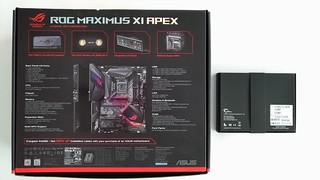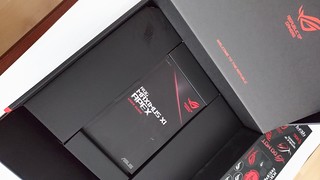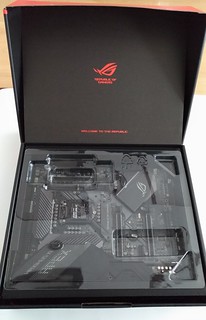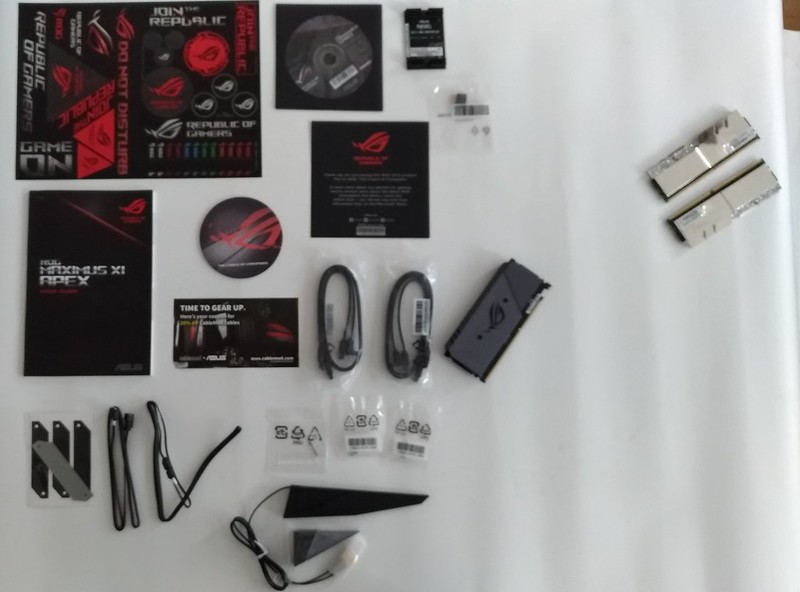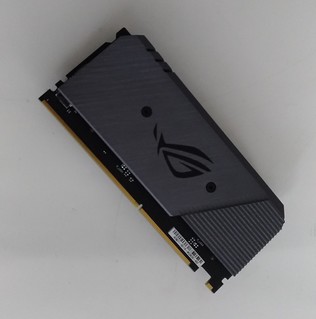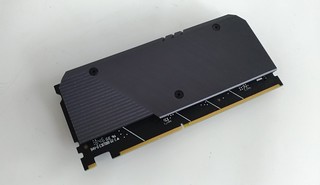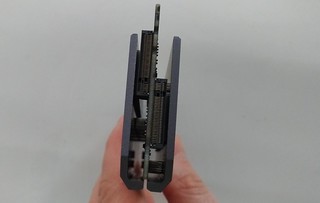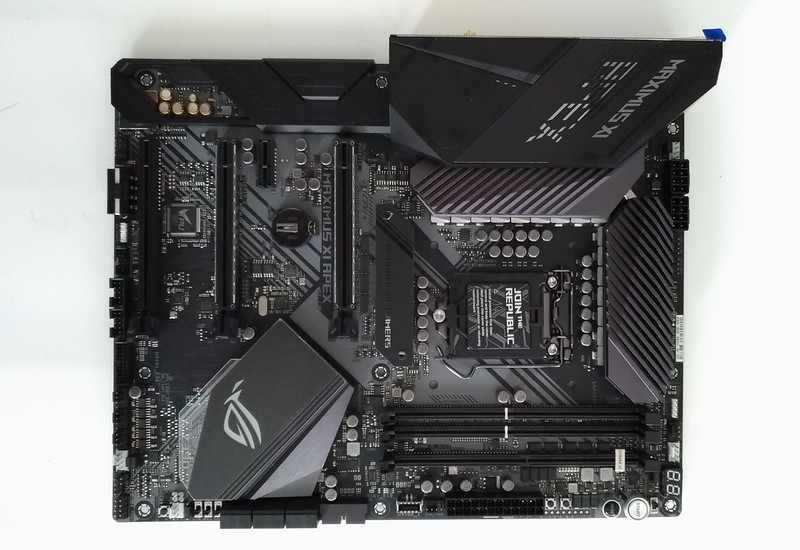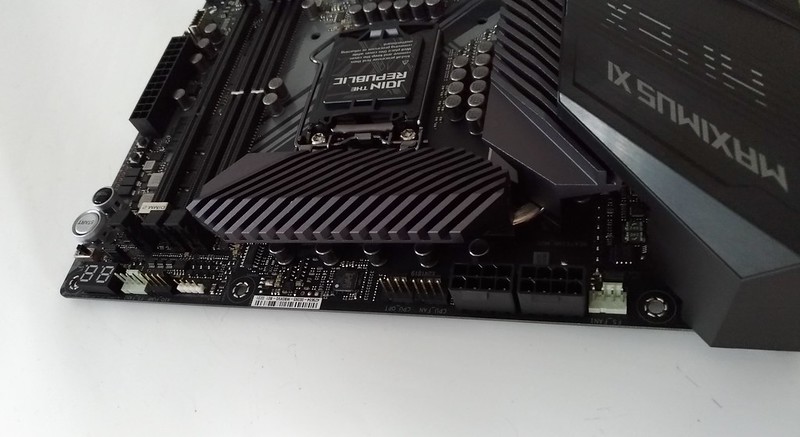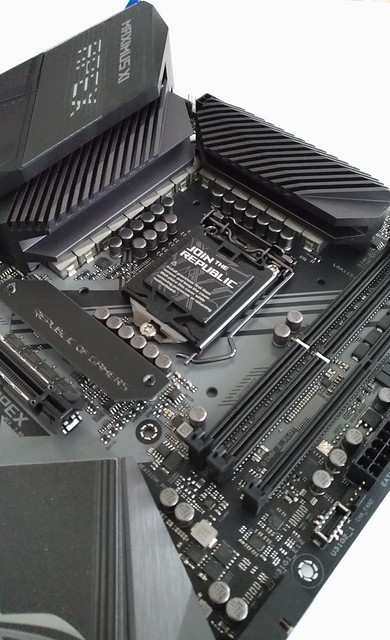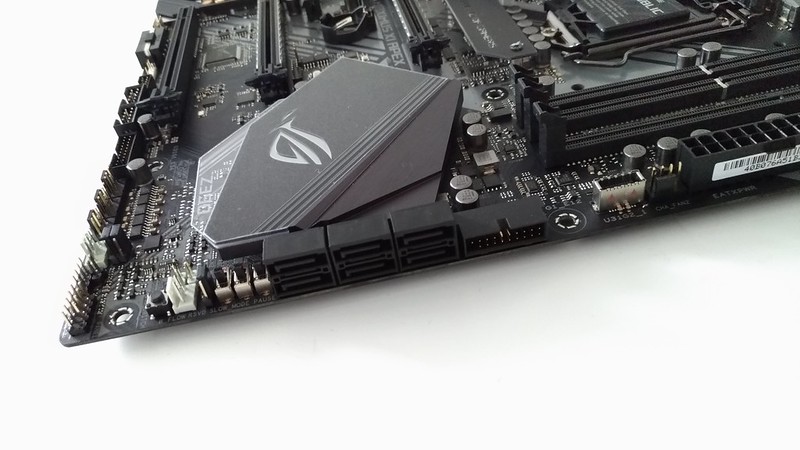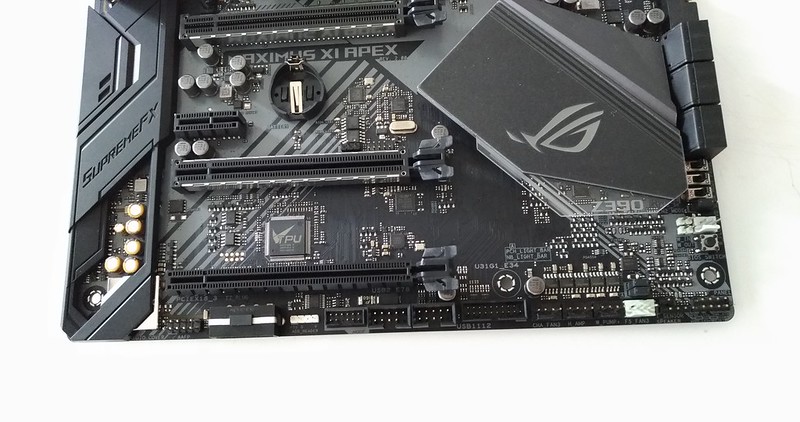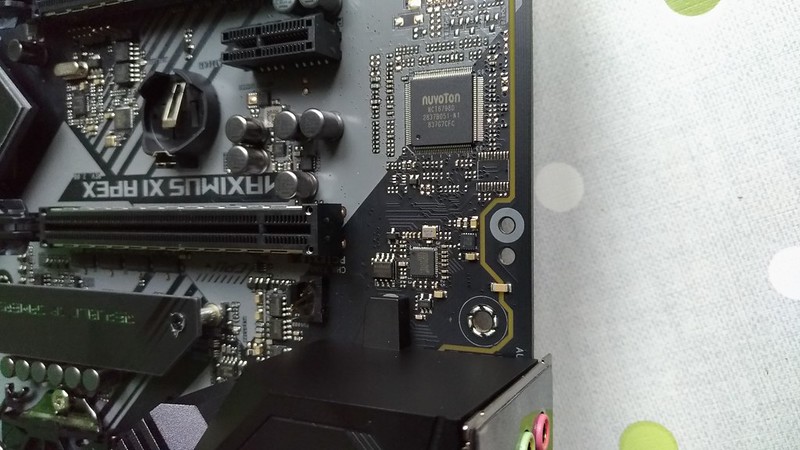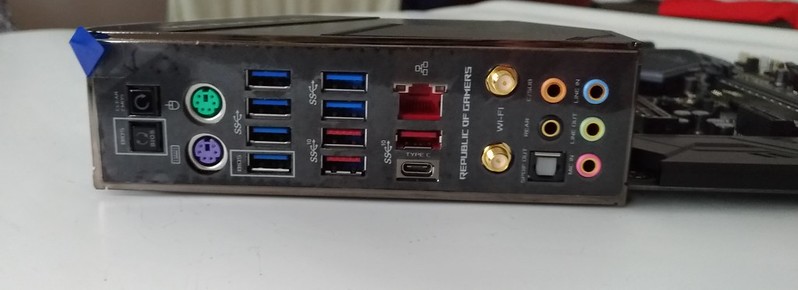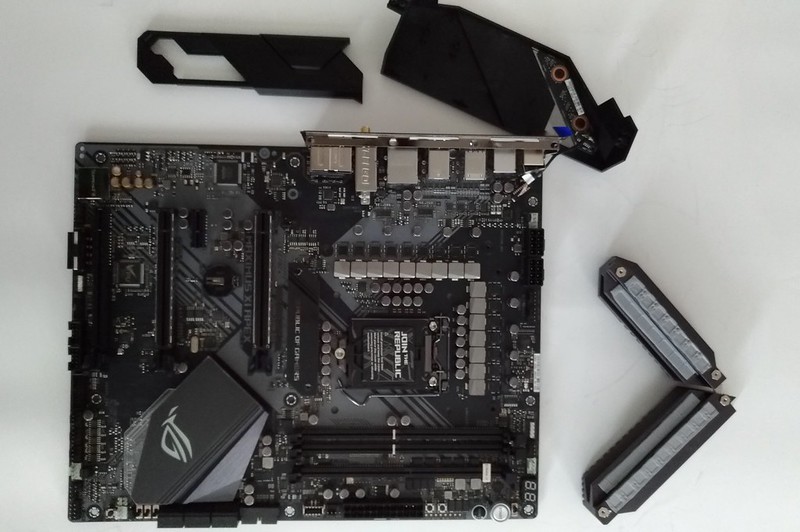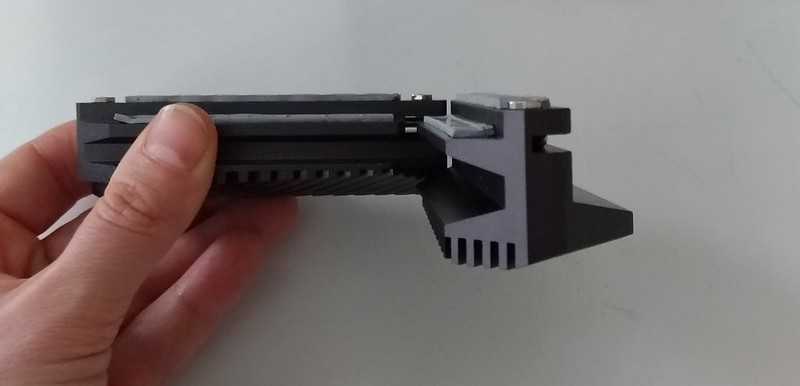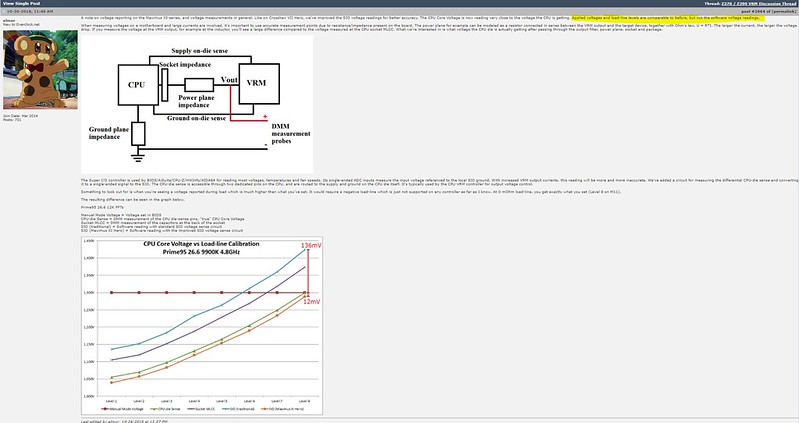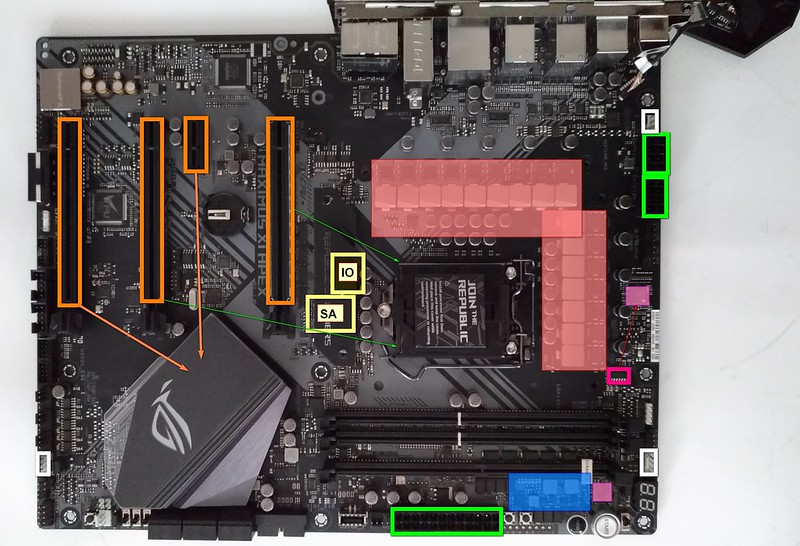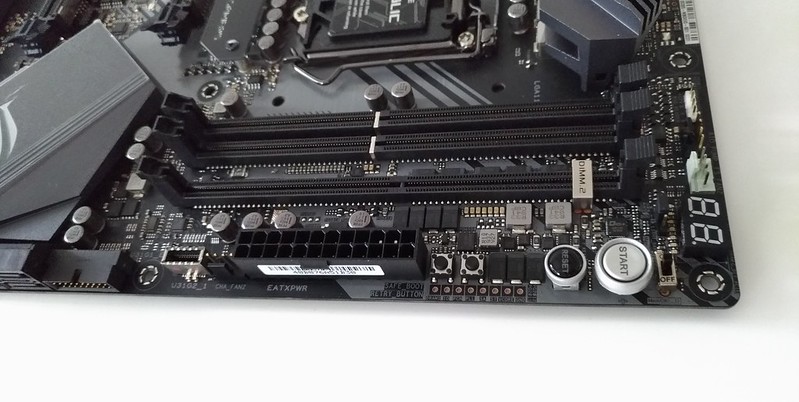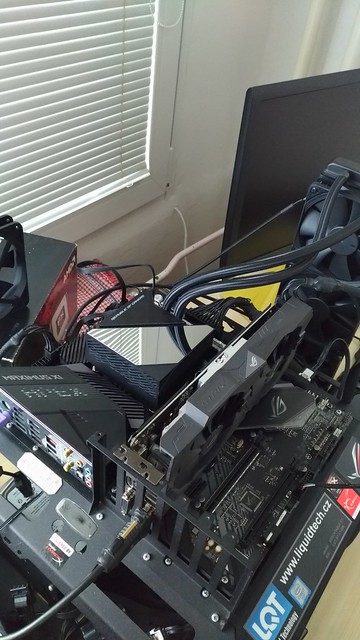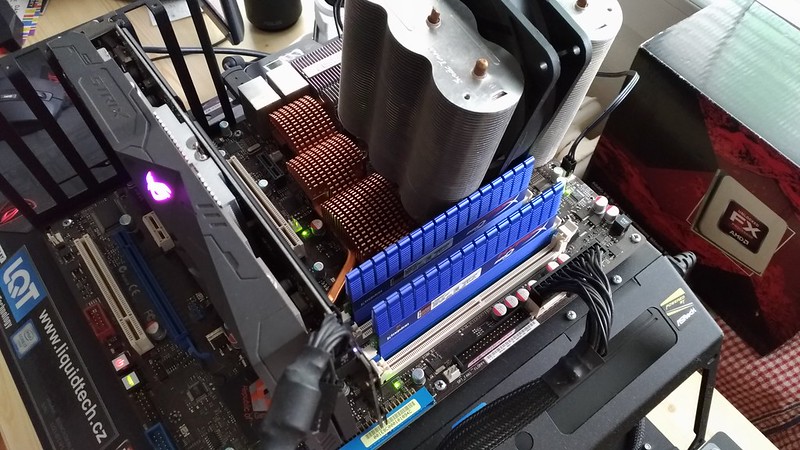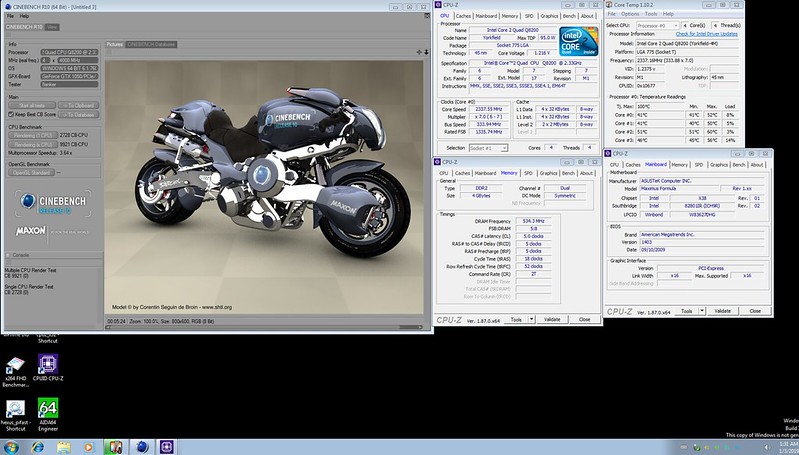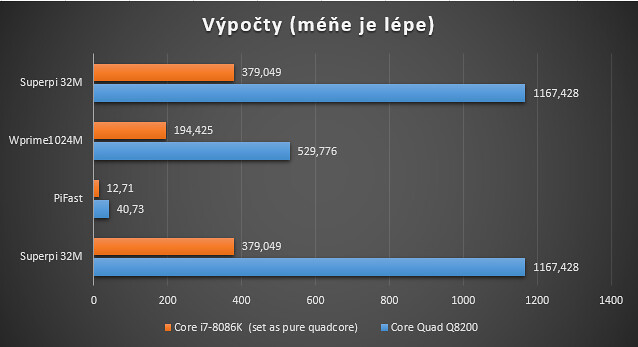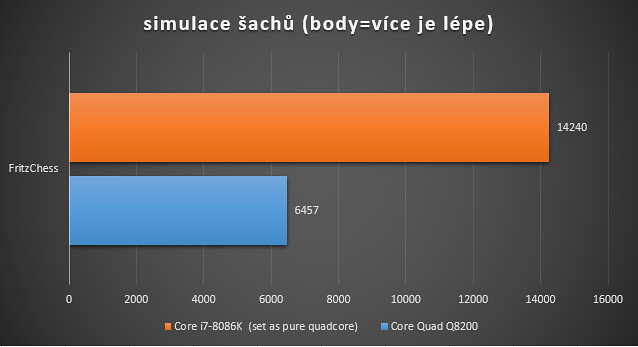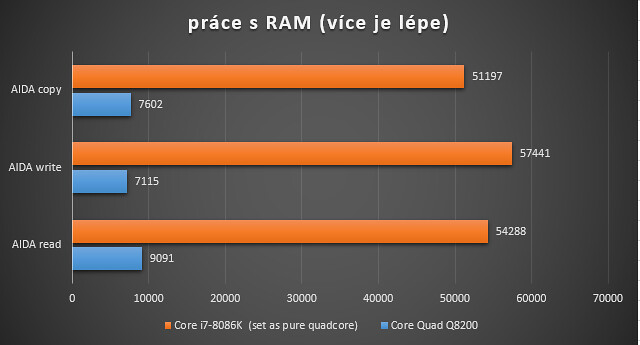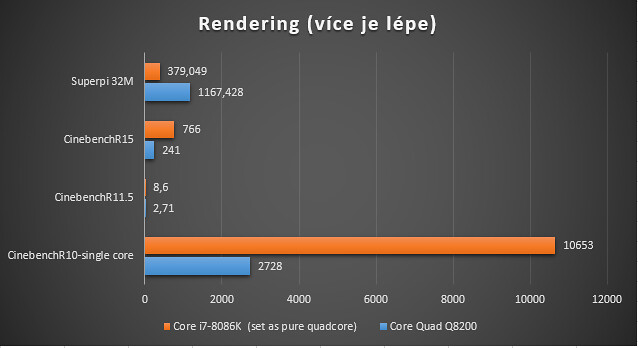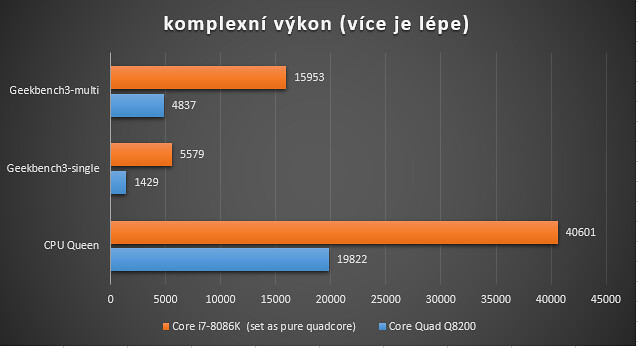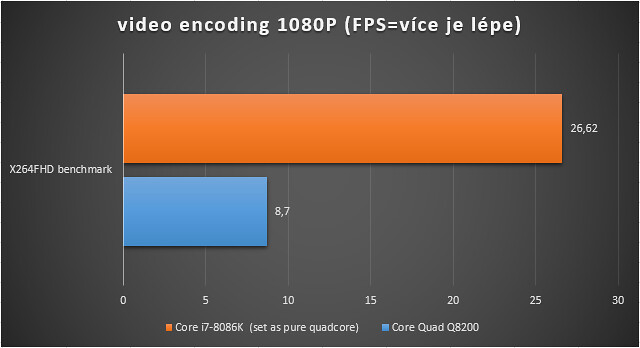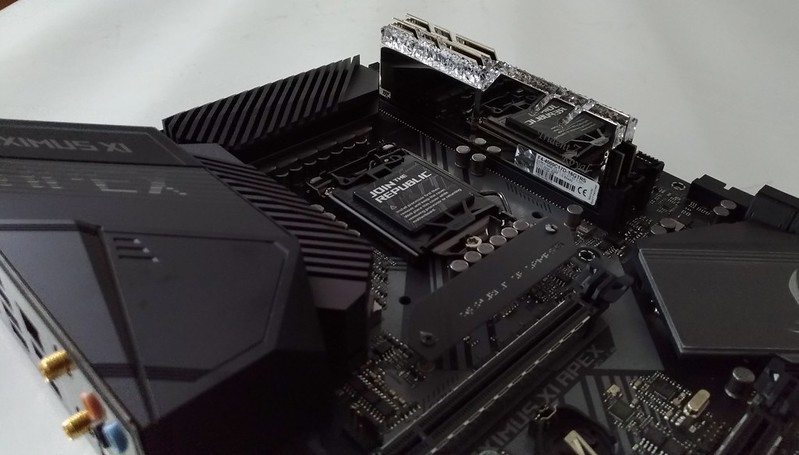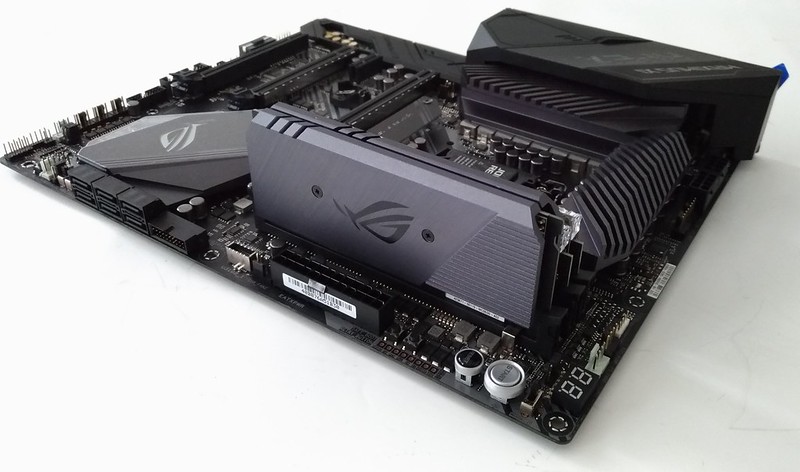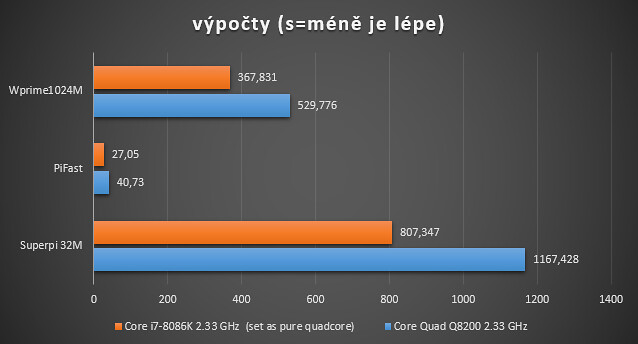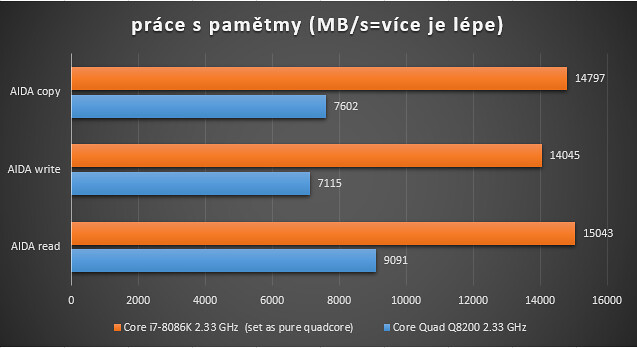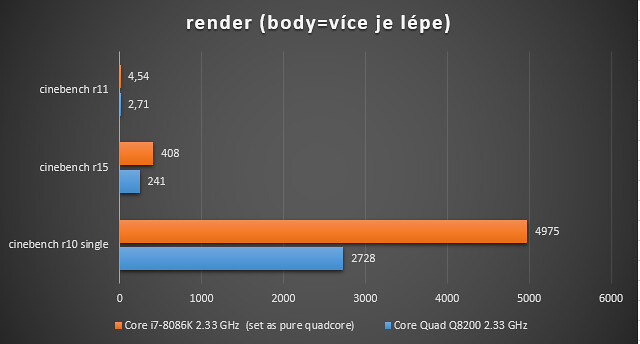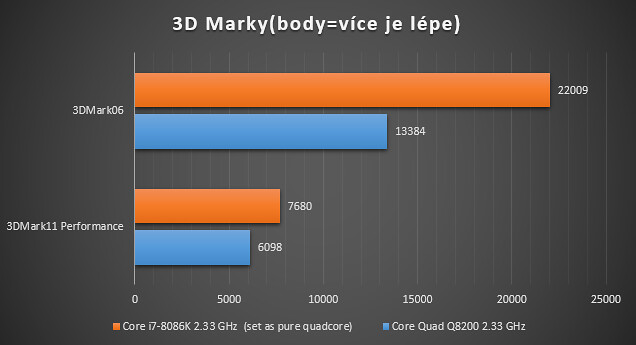- Sep 15, 2009
- 321
- 84
- 101
I spent some time with new review of motherboards. And today we are continue in my motherboards passion  . Ussually people dont much like motherboards tests. It is weird and boring. But today we can try to show whats channged on Intel platforms after 10 years! How changed CPU performance with the same numbers of cores and threads??? Stand against 45nm CoreQuad Q8200 and 14nm++ Core i7-8086K. i7-8086 was configured as 4C/4T in BIOS. Generally for testing I used legacy tests. Maybe it could be more fair to Q8200.
. Ussually people dont much like motherboards tests. It is weird and boring. But today we can try to show whats channged on Intel platforms after 10 years! How changed CPU performance with the same numbers of cores and threads??? Stand against 45nm CoreQuad Q8200 and 14nm++ Core i7-8086K. i7-8086 was configured as 4C/4T in BIOS. Generally for testing I used legacy tests. Maybe it could be more fair to Q8200.
1. introduction
It is around 10 years ago, when Core Quad 45nm was inducted. And Q8200 was popular and "cheap" variant of Q95xx models. The pricing politics was more friendly than today.
Core Quad 8200 has limitation in smaller L2 cache druhé against 9000 series, that Q8200 has 4MB of L2 (2x 2MB), but CPU had solid performance for the price point. The base clock is 2.33 GHz, but with overclocking you can reach between 3-3.3 GHz.
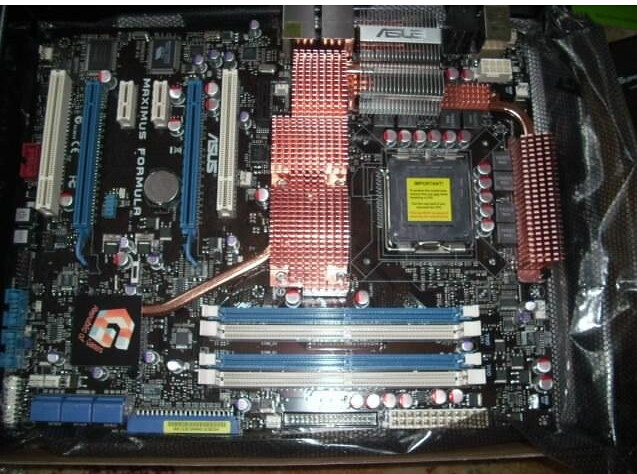
And what were good motherboards for it? One of the best was Maximus Formula chipset Intel X38. It is still class in motherboard world. Who would not remember with a little nostalgia for one of the first ROG boards? Maximus Formula is 11 years old. And X38 chipset had good equipment as you can see on screenshot. Of course, today is situation a little different...
Diagram of Intel X38 chipset
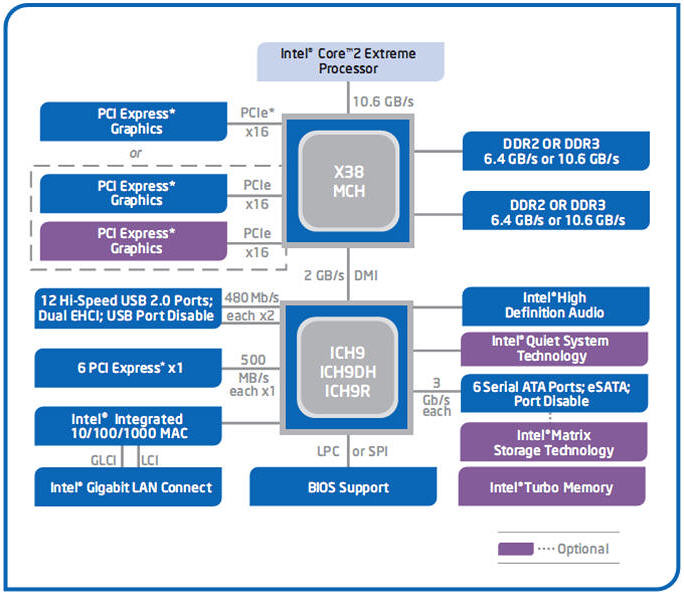
2. Maximus XI Apex in theory
The main goal and existence of the Apex board is extreme overclocking. In the market is more OC special boards (eg Maximus XI Gene and Extreme board has also special function for LN2 overclocking), but Apex is more ready for liquid nitrogen fun. There are special switches, sensors, layout...So specialized MBs is not much, currently I remmeber only EVGA Z390 Dark. Apex XI is third "Apex" in road, I remember 2017 year and first Maximus IX Apex as new king of overlcocking records.
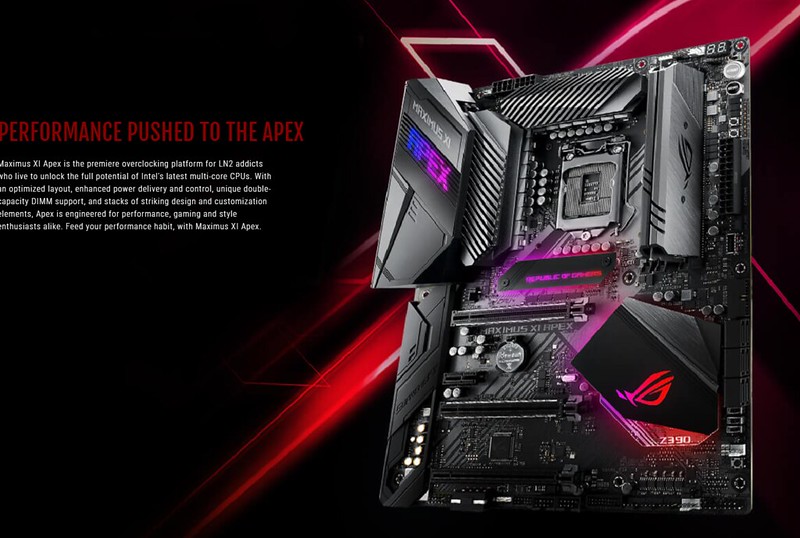

Motherboard has really strong VRM, downright extreme. CPU i9-9900K will have not limited in any situation. There are 2x 8-pins for better power distribution from PSU.
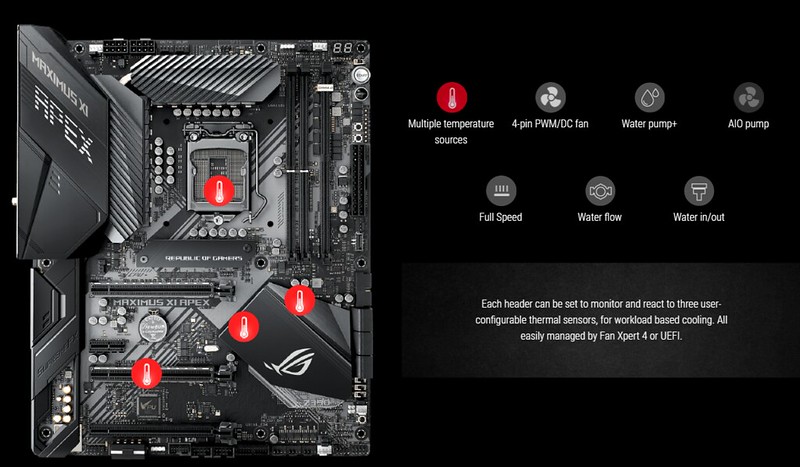
Interesting are individual temperature sensors. One is in the socket.
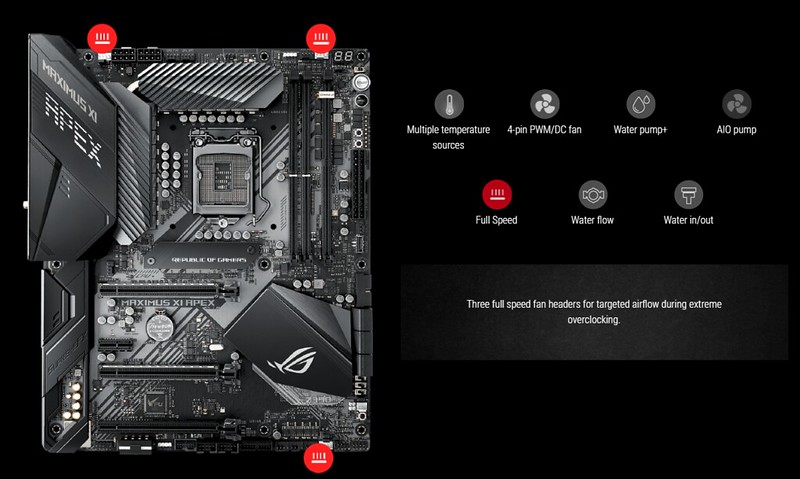
For extreme overlcocking people need special 4-pin connectors. These connectors spins without PC is powered on (need only 24-pin ATX) For extreme overcloking you need drain out all vapor.
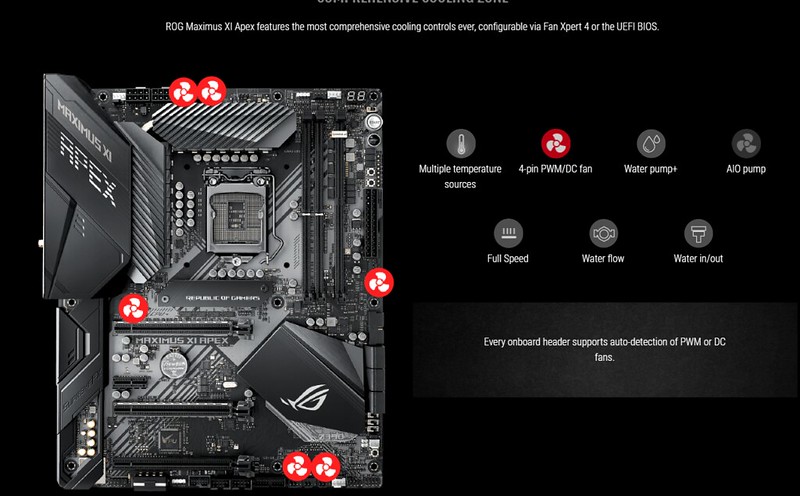
Another 6 next PWM connectors are classic PWM or DC for daily users Also, AIO PWM 4-pin is here as 7th connector on the motherboard!
Also, AIO PWM 4-pin is here as 7th connector on the motherboard!
Apex is unique also with support double capacity memory modules. Special DRAM modules are not cheap, but on Gene or Apex you cna use it and to have 64 GB capacity of RAM in two slots!
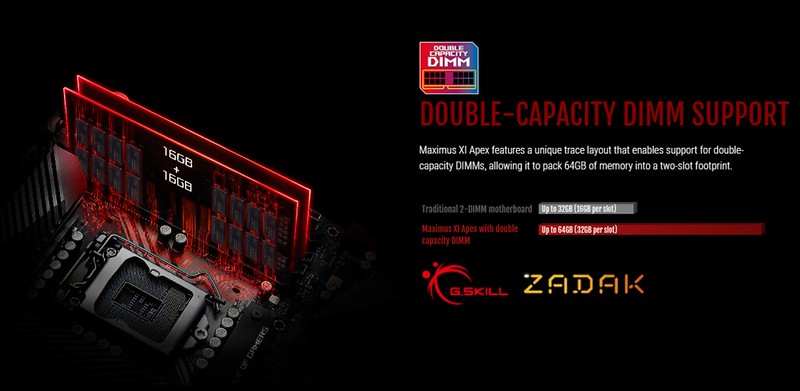
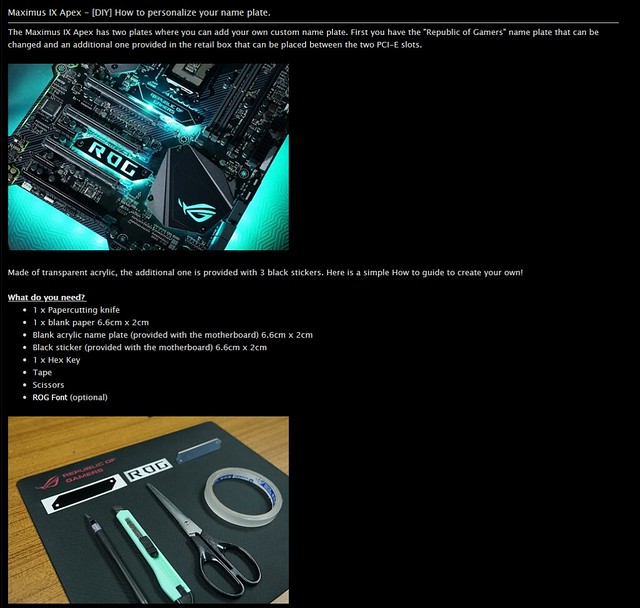
On the visual side, you can also customize the logo on the board to your own image. You can also find on ROG forum older instructions "How to do it".
Lets also look at another, rather hidden part, paired with the board software.
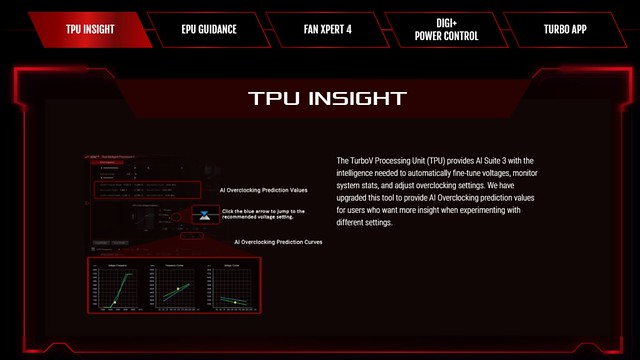
TPU function(and chip) is for intelligent OC tweaking of your PC. At Asus Z390 boards you propably know special function of OC prediction function* - depends on your actual cooling system and temperature changes as results PC winter/summer/dust in cooler etc. This is cool function, right?
*this function must be enabled in BIOS settings and also for real time prediction as "keep training" value
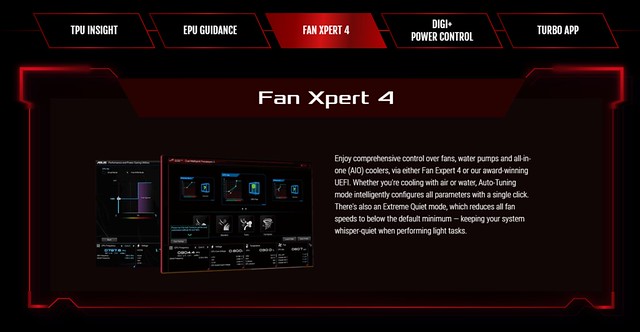
This part of the fan control and the airflow in the PC case is my favorite. I've been using it for years and it works well. Today is as version FanXpert4.
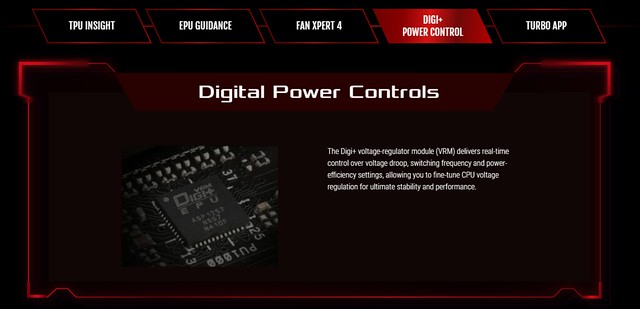
Digi+ Control focused on VRM settings. More experience guys can set everything manually in BIOS, but it is still good to have in Windows and software. ROG Z390 boards and LLC settings - best way for load is LLC7.
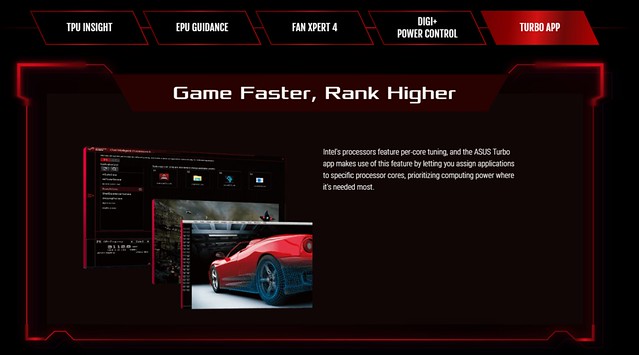
The Turbo application is related to the fact that Intel allows you to set each CPU core separately in frequency. And this can be useful for various applications where you define how many cores the application should use and at what frequency.
1. introduction
It is around 10 years ago, when Core Quad 45nm was inducted. And Q8200 was popular and "cheap" variant of Q95xx models. The pricing politics was more friendly than today.
Core Quad 8200 has limitation in smaller L2 cache druhé against 9000 series, that Q8200 has 4MB of L2 (2x 2MB), but CPU had solid performance for the price point. The base clock is 2.33 GHz, but with overclocking you can reach between 3-3.3 GHz.

And what were good motherboards for it? One of the best was Maximus Formula chipset Intel X38. It is still class in motherboard world. Who would not remember with a little nostalgia for one of the first ROG boards? Maximus Formula is 11 years old. And X38 chipset had good equipment as you can see on screenshot. Of course, today is situation a little different...
Diagram of Intel X38 chipset

2. Maximus XI Apex in theory
The main goal and existence of the Apex board is extreme overclocking. In the market is more OC special boards (eg Maximus XI Gene and Extreme board has also special function for LN2 overclocking), but Apex is more ready for liquid nitrogen fun. There are special switches, sensors, layout...So specialized MBs is not much, currently I remmeber only EVGA Z390 Dark. Apex XI is third "Apex" in road, I remember 2017 year and first Maximus IX Apex as new king of overlcocking records.


Motherboard has really strong VRM, downright extreme. CPU i9-9900K will have not limited in any situation. There are 2x 8-pins for better power distribution from PSU.

Interesting are individual temperature sensors. One is in the socket.

For extreme overlcocking people need special 4-pin connectors. These connectors spins without PC is powered on (need only 24-pin ATX) For extreme overcloking you need drain out all vapor.

Another 6 next PWM connectors are classic PWM or DC for daily users
Apex is unique also with support double capacity memory modules. Special DRAM modules are not cheap, but on Gene or Apex you cna use it and to have 64 GB capacity of RAM in two slots!


On the visual side, you can also customize the logo on the board to your own image. You can also find on ROG forum older instructions "How to do it".
Lets also look at another, rather hidden part, paired with the board software.

TPU function(and chip) is for intelligent OC tweaking of your PC. At Asus Z390 boards you propably know special function of OC prediction function* - depends on your actual cooling system and temperature changes as results PC winter/summer/dust in cooler etc. This is cool function, right?
*this function must be enabled in BIOS settings and also for real time prediction as "keep training" value

This part of the fan control and the airflow in the PC case is my favorite. I've been using it for years and it works well. Today is as version FanXpert4.

Digi+ Control focused on VRM settings. More experience guys can set everything manually in BIOS, but it is still good to have in Windows and software. ROG Z390 boards and LLC settings - best way for load is LLC7.

The Turbo application is related to the fact that Intel allows you to set each CPU core separately in frequency. And this can be useful for various applications where you define how many cores the application should use and at what frequency.



